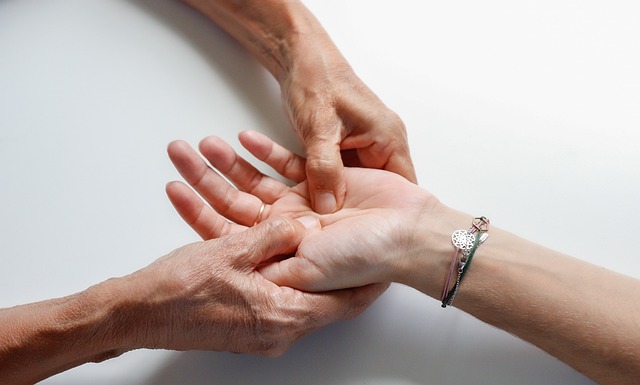Exposure therapy is a powerful and effective PTSD treatment approach that helps individuals confront and process traumatic memories in a safe environment. Through gradual exposure, it reduces emotional reactions, teaches coping strategies, and restores control over trauma-related triggers. This method includes techniques like in vivo (real-life) and imagined exposure, with Prolonged Exposure (PE) therapy encouraging repeated retelling to desensitize patients. Comprehensive assessment, goal-setting, and homework assignments enhance the effectiveness of this structured approach. Combining exposure therapy with cognitive-behavioral therapy (CBT), eye movement desensitization and reprocessing (EMDR), and mindfulness practices offers a holistic PTSD treatment plan for improved emotional regulation, reduced symptoms, and enhanced quality of life.
Exposure therapy is a powerful psychological approach that helps individuals overcome post-traumatic stress disorder (PTSD). By safely confronting traumatic memories, this therapy enables people to manage their fears and symptoms effectively. This article delves into the intricacies of exposure therapy for trauma recovery, exploring its mechanisms, techniques, preparation, and long-term benefits. We’ll guide you through various aspects, from setting realistic goals to integrating it with other therapies, offering a comprehensive understanding of PTSD treatment success stories.
Understanding Exposure Therapy: A Powerful PTSD Treatment Approach

Exposure therapy is a highly effective PTSD treatment approach that focuses on helping individuals confront and process traumatic memories or experiences. By gradually and safely exposing them to the source of their trauma, this method enables people to manage their fear and anxiety responses. It’s not about avoiding what happened; instead, it empowers patients to develop coping strategies and realize that they can handle distressing situations.
This therapy works by desensitizing individuals to traumatic memories, reducing the intensity of their emotional reactions over time. Through controlled exposure, patients learn to face their fears in a safe environment, ultimately gaining a sense of control and empowerment. As a result, exposure therapy offers a powerful tool for those seeking to overcome PTSD and regain their lives.
How Exposure Therapy Works for Trauma Recovery

Exposure therapy is a highly effective PTSD treatment that helps individuals confront and overcome traumatic memories or experiences. It works by gradually exposing the person to the trauma in a safe and controlled manner, allowing them to process and reduce the intense emotional response associated with the memory. Through this process, individuals learn to manage their fear and anxiety, eventually gaining a sense of control over the traumatic events that continue to distress them.
This therapy is based on the principle that by repeatedly exposing oneself to trauma-related stimuli, the brain can reprocess and reorganize the traumatic memories, reducing their impact. It often involves imagining or recalling the traumatic event, or even visiting places that remind the person of the trauma. The therapist guides the individual through these exposures, providing support and helping them stay in the present moment to avoid avoidance behaviors. Over time, exposure therapy enables people to integrate their experiences and regain a sense of safety and well-being.
Types of Exposure Techniques in PTSD Treatment

In the realm of PTSD treatment, exposure therapy employs various techniques to help individuals confront and overcome traumatic memories. One common method is in vivo exposure, where patients are gradually exposed to situations reminiscent of their trauma in a safe environment. This could involve visiting places or engaging in activities that were present during the traumatic event. Another approach is imagined exposure, where patients visualize the traumatic scenario in their minds, helping them process and reduce the associated fear and anxiety.
Additionally, prolonged exposure (PE) therapy is a well-known technique, designed to increase emotional exposure to trauma memories over an extended period. Through repeated retelling of the traumatic experience, patients learn to manage their emotional responses, ultimately desensitizing themselves from the trauma’s hold. These exposure techniques, when tailored to individual needs, offer effective avenues for individuals seeking PTSD treatment to reclaim their lives and alleviate symptoms associated with trauma.
Preparing for Exposure Therapy: Setting Realistic Goals

Preparing for exposure therapy involves setting realistic goals that are tailored to each individual’s specific needs. This process begins with a comprehensive assessment where therapists and clients work together to identify the traumatic events and associated triggers that require attention. By establishing clear objectives, individuals can better understand what they aim to achieve during treatment, whether it’s reducing anxiety, facing fears, or regaining control over their lives.
Realistic goal-setting ensures that exposure therapy for trauma is effective and manageable. It helps clients stay motivated by breaking down the process into achievable steps. For instance, a goal might be to gradually expose oneself to reminders of the trauma in safe and controlled settings, starting with milder triggers and progressing to more intense ones. This structured approach facilitates healing while allowing individuals to cope at their own pace, which is crucial for successful PTSD treatment.
In-Session Experiences: Facing Fears in a Safe Environment

During exposure therapy sessions, individuals with trauma-related disorders, such as post-traumatic stress disorder (PTSD), are guided to confront their fears in a controlled and safe environment. This process involves gradual and repeated exposure to traumatic memories or triggers that have been avoided due to anxiety or distress. By systematically facing these fears, patients learn coping strategies and gain a deeper understanding of their responses to past traumas.
In-session experiences play a pivotal role in the effectiveness of exposure therapy. Therapists create a supportive atmosphere where clients can explore and process their emotions without fear of retraumatization. Through various techniques, such as cognitive restructuring and relaxation exercises, individuals become more adept at managing anxiety symptoms. This safe space allows for a gradual desensitization to traumatic memories, ultimately helping patients to reprocess and reduce the impact of their traumatic experiences.
Homework Assignments: Extending the Healing Process

Exposure therapy is an effective PTSD treatment that involves gradually confronting traumatic memories or situations in a safe and controlled manner. A key component of this process are homework assignments designed to extend the healing benefits between sessions. These assignments encourage individuals to apply coping strategies learned in therapy to real-life scenarios, further desensitizing them to traumatic triggers. By continuing the exposure process outside of the clinical setting, patients can reinforce their progress and build resilience in managing anxiety related to their trauma.
Homework assignments may include practicing relaxation techniques when facing stressful situations, imagining traumatic scenarios with a focus on detached observation, or engaging in gentle physical activities that promote mindfulness. This continuous practice allows individuals to develop a stronger sense of control and reduce the intensity of emotional responses triggered by reminders of the trauma. As a result, therapy becomes more effective, leading to lasting improvements in mental health and quality of life for those suffering from PTSD.
Common Challenges and Success Stories in PTSD Treatment

Common Challenges and Success Stories in PTSD Treatment
One of the common challenges in PTSD treatment is the reluctance of individuals to seek help, often due to the stigma associated with mental health issues or a fear of reliving traumatic memories. This hesitation can significantly delay necessary care. Additionally, PTSD symptoms can be complex and multifaceted, making it difficult to tailor treatments that address all aspects of an individual’s condition. Exposure therapy, while effective, requires significant courage from patients as it involves confronting traumatic memories in a controlled environment.
Despite these challenges, numerous success stories emerge from PTSD treatment. Many individuals report feeling empowered after successfully navigating exposure therapy, finding new coping mechanisms, and reclaiming their lives. Research supports the efficacy of evidence-based therapies like cognitive behavioral therapy (CBT) and eye movement desensitization and reprocessing (EMDR), which have helped countless people manage and overcome PTSD symptoms. These treatments offer hope and a path to healing for those affected by trauma.
Integrating Exposure Therapy with Other Therapeutic Modalities

In many cases, exposure therapy is most effective when integrated with other therapeutic modalities for PTSD treatment. By combining techniques such as cognitive-behavioral therapy (CBT), eye movement desensitization and reprocessing (EMDR), or mindfulness practices, therapists can address various aspects of trauma recovery simultaneously. This comprehensive approach allows individuals to confront and process traumatic memories while also developing healthier coping mechanisms, emotional regulation strategies, and improved overall well-being.
The integration of exposure therapy with these other methods can provide a more nuanced and tailored treatment plan. For instance, CBT helps individuals challenge negative thoughts and beliefs associated with the trauma, while exposure therapy safely recreates traumatic triggers to reduce anxiety and fear responses. EMDR facilitates the processing of forgotten or repressed memories, and mindfulness practices enhance present-moment awareness, enabling individuals to better manage flashbacks and intrusive thoughts. Together, these therapies work synergistically to offer a holistic approach to PTSD treatment.
Long-Term Benefits and Outcomes of Effective Exposure Therapy

Effective exposure therapy offers significant long-term benefits for individuals with post-traumatic stress disorder (PTSD). By gradually and safely exposing patients to traumatic memories or triggers, therapists help them confront and process these experiences, leading to reduced symptoms over time. Studies show that this approach can result in substantial improvements in mental health, including decreased anxiety, depression, and nightmares, as well as enhanced emotional regulation and overall quality of life.
One of the key outcomes is desensitization to traumatic memories, allowing individuals to experience fewer avoidance behaviors and a greater sense of control over their emotions. This process enables them to lead more fulfilling lives, free from the constant fear or avoidance that often characterizes PTSD. Over time, exposure therapy can foster resilience, helping individuals cope with future stressors in healthier, more adaptive ways.
